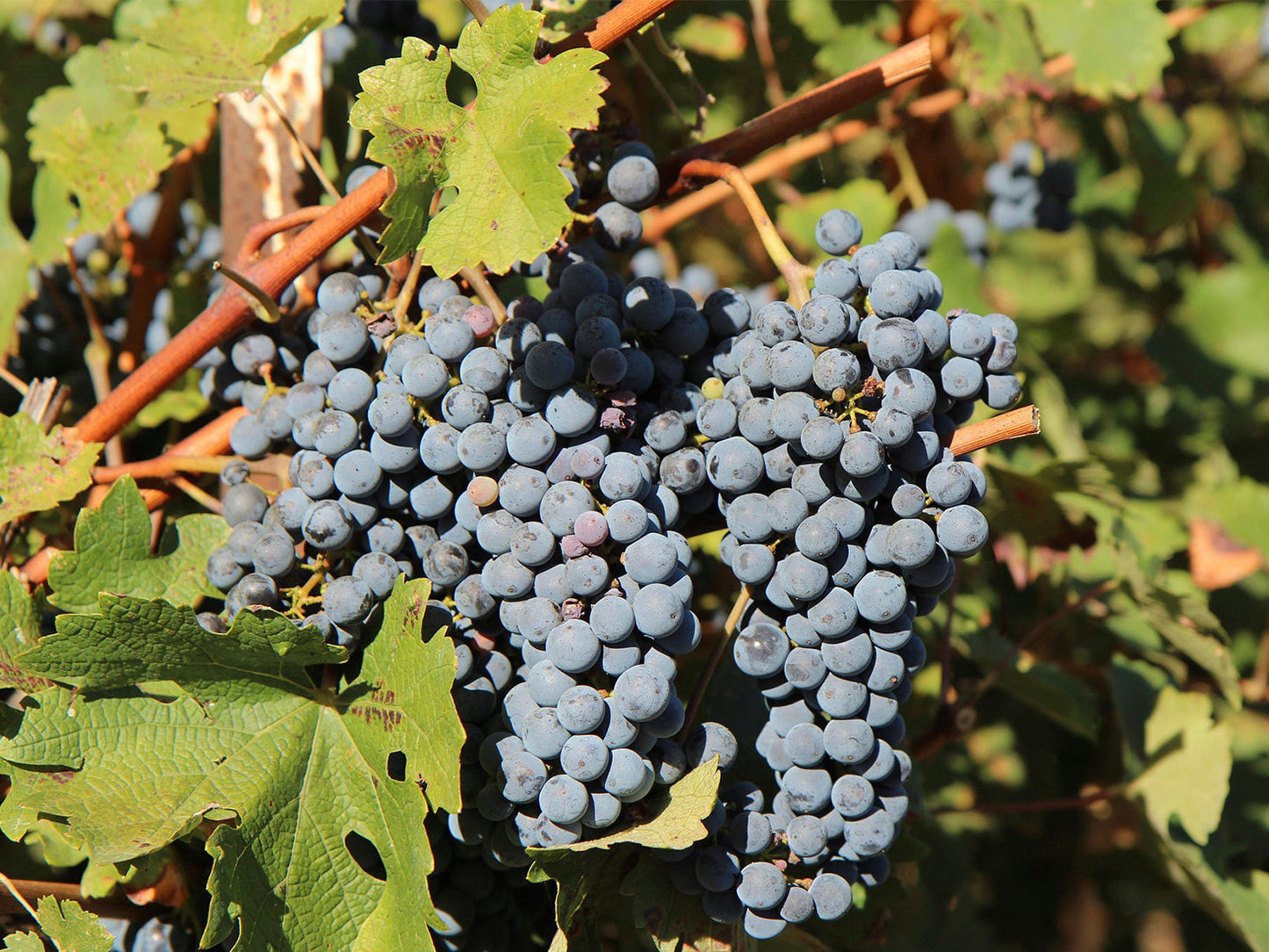
Photo: Pixabay.com/Etienne-F59
Text by: SW team
Merlot stands out among red grape varieties for its plush texture and accessible character. If red grapes were to be divided stylistically, we could think in terms of structure (Cabernet Sauvignon, Nebbiolo…) versus softness (Merlot, Grenache…). Merlot is the undisputed king of the latter: soft, rounded, and easy-drinking yet capable of astonishing depth and complexity. Its home is Bordeaux, especially the Right Bank, but it has traveled the world, adapting gracefully to diverse climates and winemaking techniques. While often overshadowed by its firmer sibling Cabernet Sauvignon, Merlot has earned its place in the pantheon of great grapes. The most famous Merlots hail from Pomerol and Saint-Émilion, such as the legendary Château Pétrus. Outside France, Merlot finds success in Italy’s Tuscany, California’s Napa Valley, Chile’s Central Valley, and parts of Australia and Eastern Europe.
The origin
Merlot is believed to have originated in Bordeaux, France, first mentioned in the 18th century. Its name likely comes from the French word merle (blackbird), perhaps due to the bird’s fondness for the ripe berries. It is a natural offspring of Cabernet Franc and a sibling to Carménère. It has long been used as a blending partner in Bordeaux to soften the more tannic Cabernet Sauvignon, but in regions like Pomerol, it proudly stands alone.
Aromas and flavors
Merlot's aromatic palette is deep and seductive. At its core, it typically expresses plums, black cherries, and red berries. In warmer climates, the profile can lean toward ripe blackberries, chocolate, and mocha, while cooler climates bring out fresher red fruits, herbal notes, and even hints of graphite. With age, Merlot develops truffle, leather, and earthy tones, especially in top-tier Bordeaux examples. Its texture is one of its trademarks: soft tannins, round mouthfeel, and moderate acidity make it incredibly versatile and friendly to a wide audience.

The most popular and the most expensive Merlot in the world: Petrus.
Regions and styles
France 🇫🇷
Bordeaux remains Merlot’s heartland. On the Right Bank – particularly in Pomerol and Saint-Émilion – Merlot dominates blends or takes the stage solo. Pétrus, Château Le Pin, and Château Cheval Blanc (along with Cabernet Franc) produce some of the most celebrated wines in the world. These wines balance ripe fruit, earthy complexity, and cellar-worthy structure.
Italy 🇮🇹
In Tuscany, Merlot plays a key role in “Super Tuscan” wines, especially in Bolgheri, where it’s often blended with Cabernet Sauvignon and Sangiovese. Top names include Masseto (100% Merlot) and Ornellaia. Here, Merlot brings lushness to the otherwise firm Tuscan profile.
United States 🇺🇸
California’s Merlot spans a broad spectrum: from soft, fruity, supermarket wines to structured, age-worthy expressions from Napa’s hillside vineyards. Duckhorn Vineyards was instrumental in elevating California Merlot's reputation. Washington State also produces vibrant Merlots, especially in Walla Walla and Columbia Valley.
Chile 🇨🇱
The Central Valley of Chile offers some of the most value-driven Merlot wines, often fruit-forward with juicy plum and cherry notes. These wines tend to be softer and easy-drinking, ideal for everyday enjoyment.
Australia 🇦🇺 and New Zealand 🇳🇿
In Australia, particularly in regions like Coonawarra and Margaret River, Merlot can show a more structured, ripe style with dark fruit and spice. New Zealand’s Merlots (mostly from Hawke's Bay) are often blended with Cabernet Sauvignon and Malbec, offering a Bordeaux-like structure with a vibrant Southern Hemisphere twist.
Food pairings
Merlot’s smooth texture and balanced profile make it an excellent companion for many dishes. It pairs beautifully with roasted or grilled meats like lamb, pork, and beef, where its moderate tannins enhance the savoriness without overwhelming the palate. Earthy dishes such as mushroom risottos or lentil stews harmonize well with Merlot’s subtle herbal and umami notes. Its fruitiness complements tomato-based pastas and Mediterranean cuisine, while its plush mouthfeel makes it a surprisingly good match for burgers, meatloaf, and even barbecue. Lighter Merlots work well with chicken, turkey, and richer fish like salmon.
